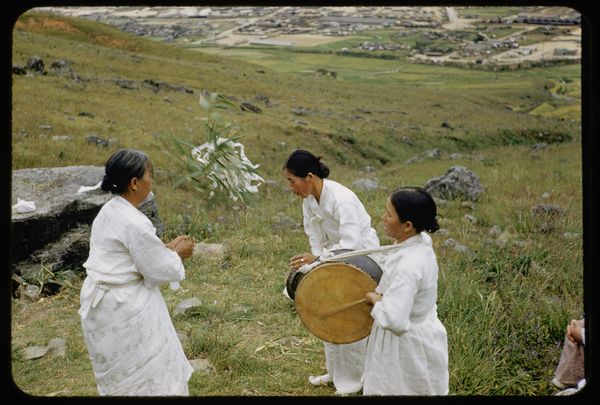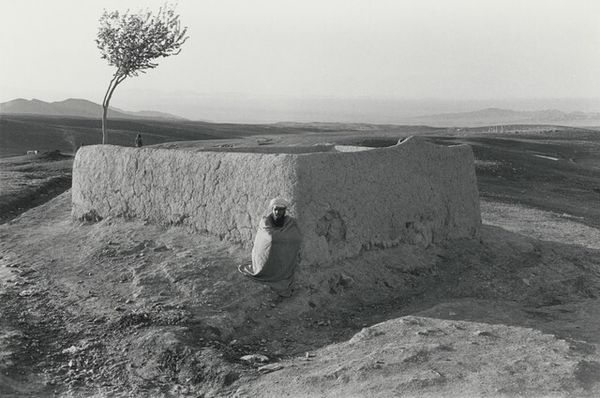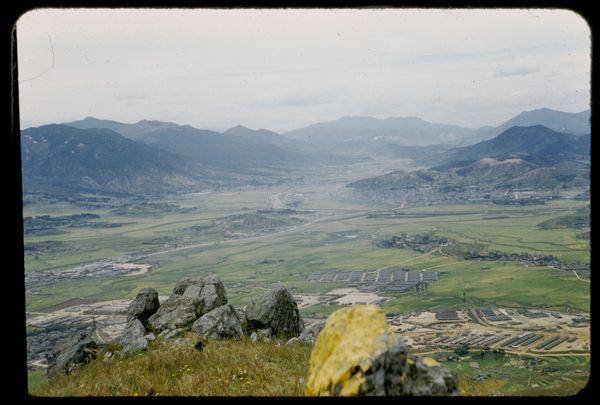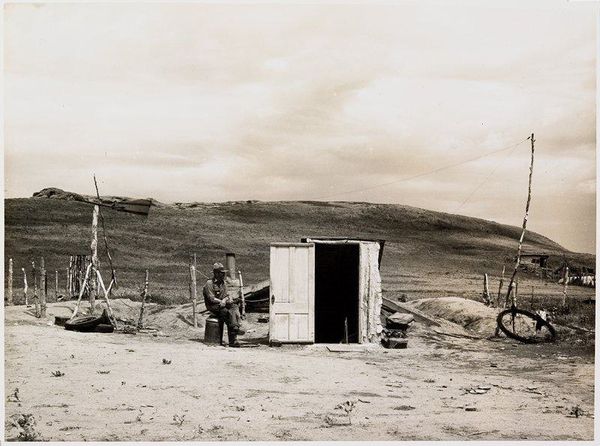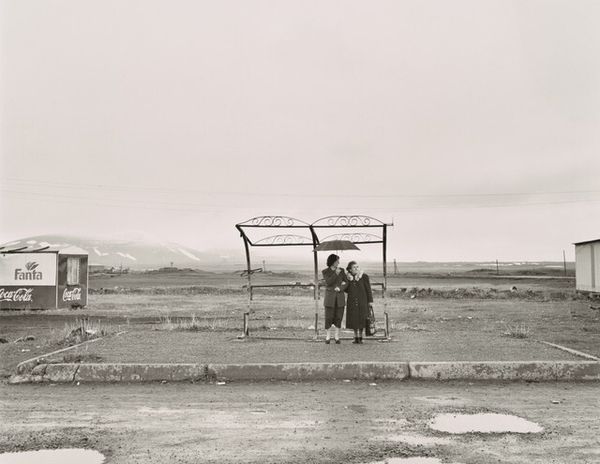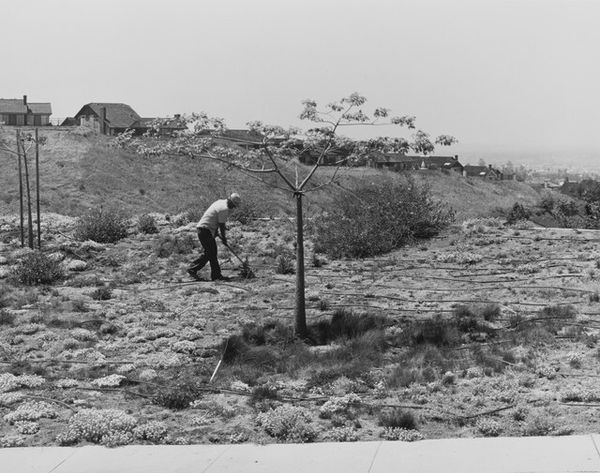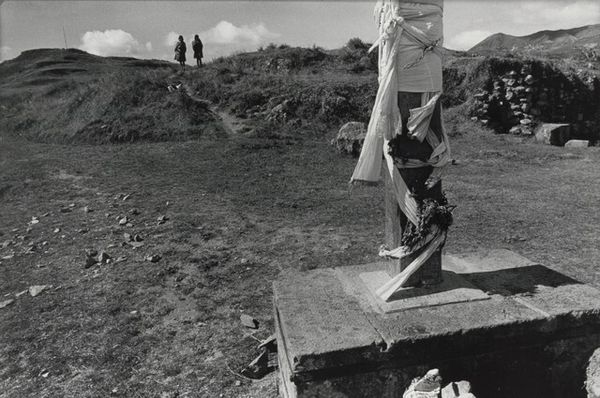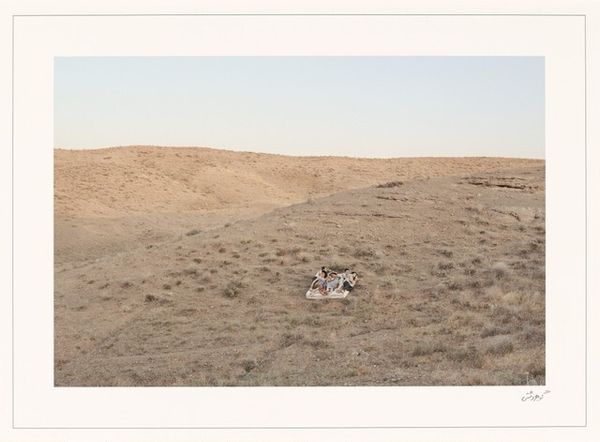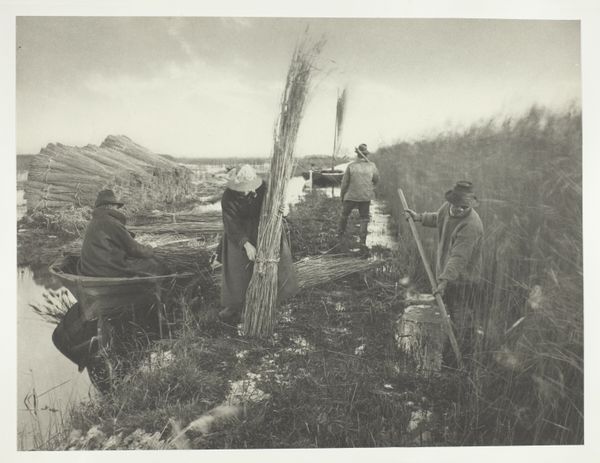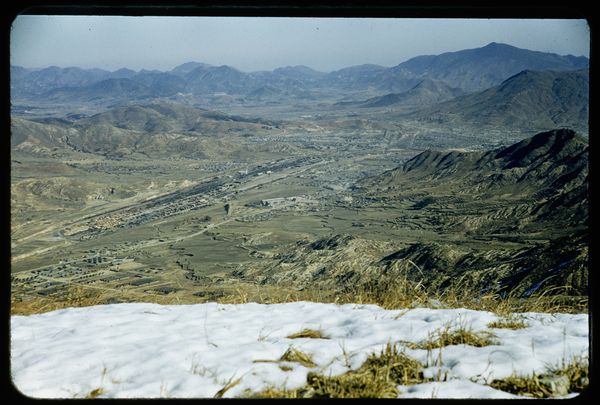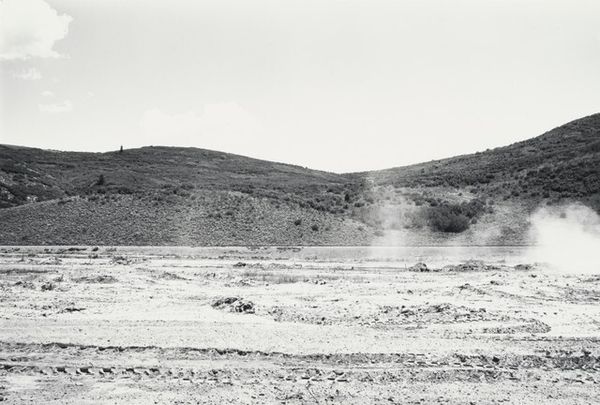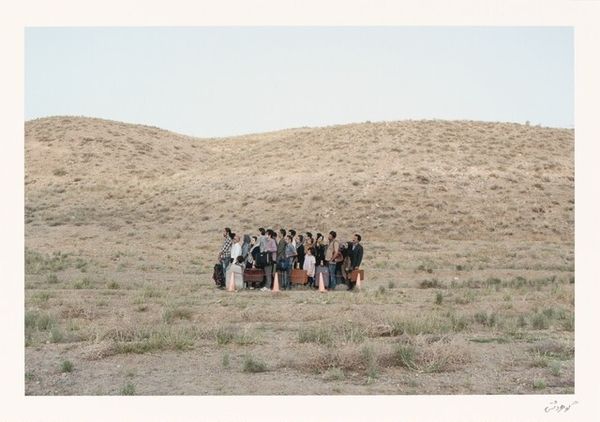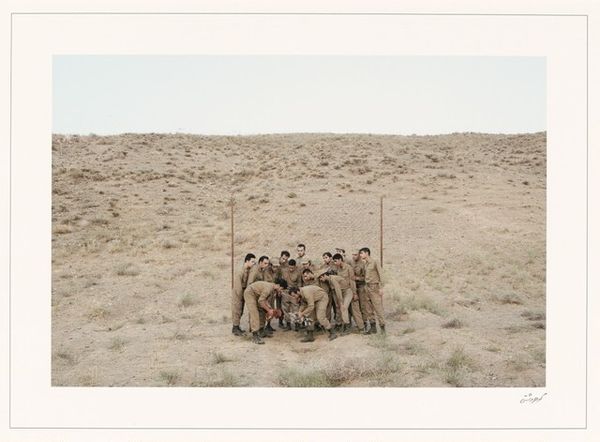
Dimensions: height 5 cm, width 5 cm
Copyright: Rijks Museum: Open Domain
Curator: Oh, I'm immediately drawn to the somber serenity of this photograph. There’s something so peaceful and sad about the group gathered on that hillside. Editor: This photograph is titled "Feest in de buurt van Busan," which translates to "Festival Near Busan," taken by David Ketel between 1951 and 1953. It’s a C-print that offers a fascinating glimpse into a specific moment in Korean history and postwar identity. Curator: "Festival" seems ironic somehow, doesn't it? With that cloudy sky and muted palette... I’m not getting party vibes. More like…mourning? Or a quiet ceremony. Editor: I see that. Contextually, the period aligns with the Korean War, a conflict deeply interwoven with Cold War politics and devastating societal impact. "Feest," or "Festival" seems misplaced given the heavy historical implications of the setting. We have to think about how words can both reveal and obscure truth in conflict zones. Curator: Absolutely. Look at their attire, all in white. Is that traditional for mourning in Korean culture? Editor: Yes, white is traditionally the color of mourning and ritual purity in Korea. The composition, too, places these figures almost as intermediaries between the earthly plane and the city receding into the distance, like souls ascending to something…else. Curator: I'm also curious about the almost naive plein-air style of the shot, with Busan spread out in the background like an abstract painting, that contrast between tradition, representation and really modern themes creates such an interesting dichotomy. Editor: That intersection is potent. Ketel captures something deeply resonant here about resilience. While the war ravages lives and landscapes, cultural traditions endure as silent acts of resistance against erasure. This tension, it shows in the seemingly straightforward group portrait. The lens turns witnessing into bearing witness. Curator: That quiet resistance is such a powerful way to read it. And those are the untold stories that sometimes only art can tell. It shifts my understanding of the entire piece now. Editor: Agreed. It’s a layered image; its beauty tempered with sorrow and defiance woven into the fabric of survival. Art can make that very struggle more visible, more humane.
Comments
No comments
Be the first to comment and join the conversation on the ultimate creative platform.
